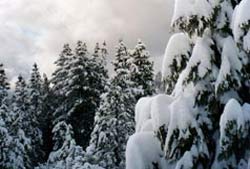Rain and Snow: Scientists Don't Know How Much Falls

With constant weather forecasts on TV and the Internet and all the precise storm totals that are reported, you might think scientists had a firm grasp of how much rain and snow falls around the planet. And you'd be wrong.
"It's amazing how much we don't know about global patterns of rain and snow," said Walt Petersen, an atmospheric scientist with the National Space Science and Technology Center and the University of Alabama in Huntsville.
Meteorologists don't know how much snow falls each day and where it lands. They also don't know how much rain comes down, nor how much is heavy downpours versus light drizzles.
"These are just a few of the outstanding questions," Petersen said.
NASA promises a greater understand with future observations from space. The agency recently funded some five dozen proposals to figure out how best to improve these measurements, according to a statement released this week. Peterson is among those whose been funded to work on the task.
"Snow is a huge problem," Petersen said. While rain involves simple droplets of liquid, whose volume can be estimated by radar, snowflakes come in an infinite variety of shapes and densities (though the old adage about no two flakes being alike might not be fully accurate). The intricate crystals that make up a snowflake reflect radar in all sorts of crazy ways. "The amounts of air and ice can vary quite a bit from snowflake to snowflake," he said.
"Further, snowflakes also rime and melt. This means you can also have water on the surface--another complication."
Sign up for the Live Science daily newsletter now
Get the world’s most fascinating discoveries delivered straight to your inbox.
Snow totals are accurate, therefore, only in spots where it's measured with a stick in the ground.
Better snowfall estimates are needed because snow brings water out of the atmosphere, drying out the air and changing the physics up there. Plus, snow on the ground reflect sunlight back to space and cools the planet.
In 2013, NASA plans to launch a new radar instrument on the Global Precipitation Mission satellite (GPM). The satellite will be the first to measure precipitation beyond the tropics as its orbit will go almost over the Arctic Circle.
The GPM will be able to detect drizzle that current satellites cannot. Lasting sometimes for days in drab locales, drizzle can move large amounts of water from the atmosphere.
"It's all water," Petersen says of drizzle, snow and all the other forms of precipitation. "We've got to keep track of it in every form to truly understand the climate of Earth."
Images: Snowflakes / Tornadoes / Clouds / Lightning / Hurricanes










